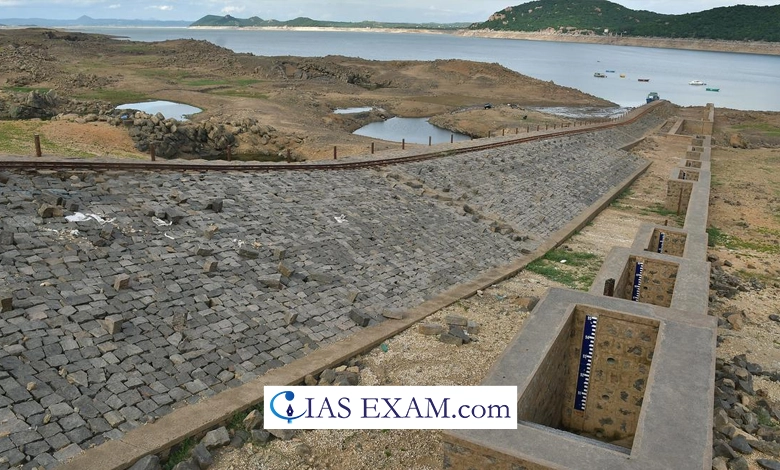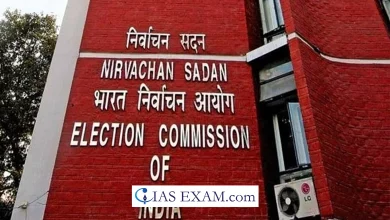Preparing India for Water Stress and Climate Resilience
GS Paper 3 - Changes in critical geographical features, Climate Change

Context
The Indian Meteorological Department (MD) predicts a hotter summer and longer heatwaves for the months of April-June. In lieu of this, India and Indians must be prepared to face Water Stress in various parts of the country.
The challenge is that we are programmed to consider acute stresses (heat, water or extreme weather) as temporary, which are to be handled often as disaster relief. We must move from panic reactions when disaster strikes (like the water crisis in Bengaluru), to understand and respond to the chronic nature of risks we face. Moreover, climate action cannot be left to a few sectors or businesses.
Water Scarcity Scenario
- Water scarcity leads to the poor functioning of ecosystems, threatens food and water security and ultimately affects peace.
- According to the World Resource Institute. 17 countries face ‘extremely high’ levels of water stress which is threatening to result in conflict and unrest among people.
- India houses 18% of the world’s population on 4% of the earth’s surface area and has just 4% of global freshwater resources.
- Nearly half its rivers are polluted, and 150 of its primary reservoirs are currently at just 38% of their total live storage capacity.
- India is the largest user of groundwater in the world. Three-quarters of India’s districts are hotspots for extreme climate events.
Relation between Water and Economy
- Water connects the hydrological, food, and energy systems, affecting millions of people. Precipitation is the principal source of soil moisture, vegetation-stored water (green water), and water accessible in rivers and aquifers (blue water).
- Both blue and green water have an influence on the food we cultivate, irrigating crops, altering harvests, and being vital to the economy. This industry employs the most people and is becoming more exposed to climate change.
- According to the India Employment Report 2024, agriculture still employs over 45% of the population and accounts for the majority of the country’s workforce.
- According to a research conducted by the Council on Energy, Environment, and Water (CEEW), monsoon rainfall patterns in India are shifting, with 55% of ‘tehsils’ or sub-districts experiencing a substantial rise of more than 10% in southwest monsoon rainfall over the last decade.
- The increased rainfall is typically caused by short-duration, intense rain, which affects agricultural sowing, irrigation, and harvesting. Making the agriculture industry more robust to climate and water stress is important for jobs, growth, and sustainability.
- Water is an important part of the world’s renewable energy transition. Green hydrogen is a crucial pillar for decarbonizing the industrial and long-distance transportation sectors. It is made from water and power generated from renewable resources.
- Pumped storage hydropower serves as a natural battery and is critical for balancing the power system load. It is an essential component of a clean, dependable power supply.
Climate Crisis and its Impact on Hydrometeorological Disasters
- According to the UN World Water Development Report 2020, about 75% of natural catastrophes in the previous two decades were water-related.
- A review of CEEW data (from 1970 to 2019), the number of flood-related occurrences (such as landslides, thunderstorms, and cloud bursts) rose by up to 20 times in India.
- Freshwater, one of the nine planetary limits, has been crossed (2023 research).
Measures to be adopted for Water Security
- Attaining water security will need a mix of the right policies, judicious use of water, including reuse of urban wastewater, and finance for adapting to a changing world.
- Effective water governance needs policies that recognise its interactions with food and energy systems.
- CEEW and International Water Management Institute (IWMI) analysis shows that although India has adopted several policies –
-
- Most do not recognise this nexus while planning or at the implementation stage.
- Scaling up of green hydrogen is desirable, the link with water availability is not always considered.
- The impact of scaling up solar irrigation pumps on groundwater levels must be analyzed to deploy the technology where there is an optimal mix of solar resource and higher groundwater levels.
- Policies should incorporate the food-land-water nexus through localized evidence and community engagement.
- India needs to focus on the judicious use of blue and green water through water accounting and efficient reuse. The National Water Mission targets increasing water use efficiency by 20% by 2025.
- The Atal Mission on Rejuvenation and Urban Transformation (AMRUT) 2.0 calls for reducing non-revenue water, which is lost before it reaches the end user, to less than 20% in urban local bodies. These are not backed by any baseline set using water accounting principles that will help quantify the “20 percent” change in freshwater use.
- In the absence of water use data(for the reference year): It is difficult to quantify the potential water saving in one sector, such as agriculture, that can then be diverted to other sectors – such as industries or domestic purposes, which will drive India’s water demand.
- Water accounting is essential for promoting water use efficiency and creating incentives for investments in treated wastewater reuse.
Way Forward
- We must move from panic reactions when disaster strikes (like the water crisis in Bengaluru), to understand and respond to the chronic nature of risks we face.
- Climate action cannot be left to a few sectors or businesses. Nor can environmental sustainability be reduced to sapling plantation drives over a few days.
- Leverage financial tools to raise money for climate adaptation in the water sector. India’s climate action has been largely focused on mitigation in the industrial, energy, and transport sectors.
Conclusion
As we navigate the complexities of preparing India for water stress and climate resilience, it is imperative that we recognize the chronic nature of the risks we face and adopt proactive measures to mitigate them. Water scarcity poses a significant threat to ecosystems, food and water security, and ultimately, peace. The interconnection between water, economy, and climate underscores the urgency of our actions in addressing these challenges.
SOURCE: The Hindu





.png)



